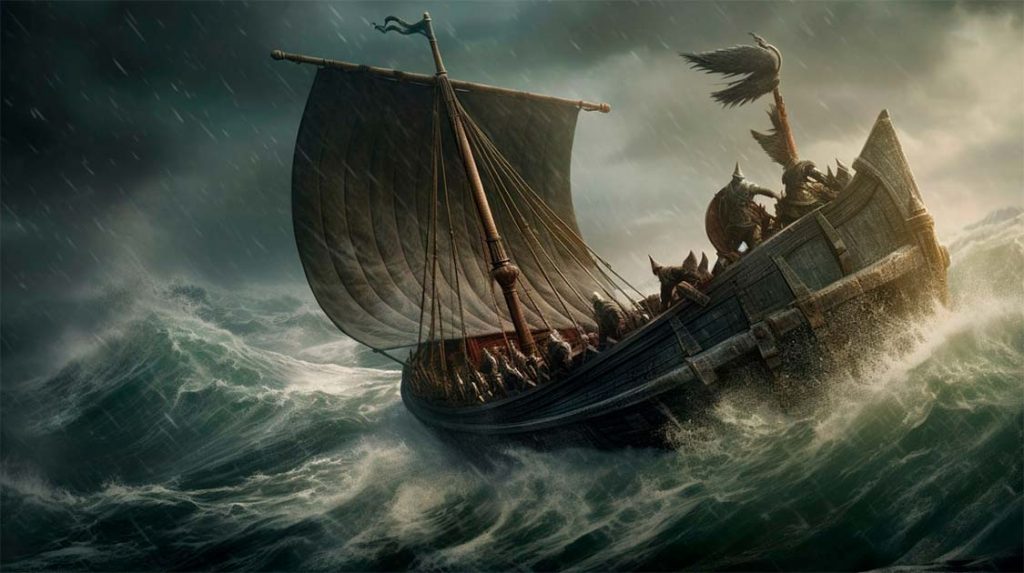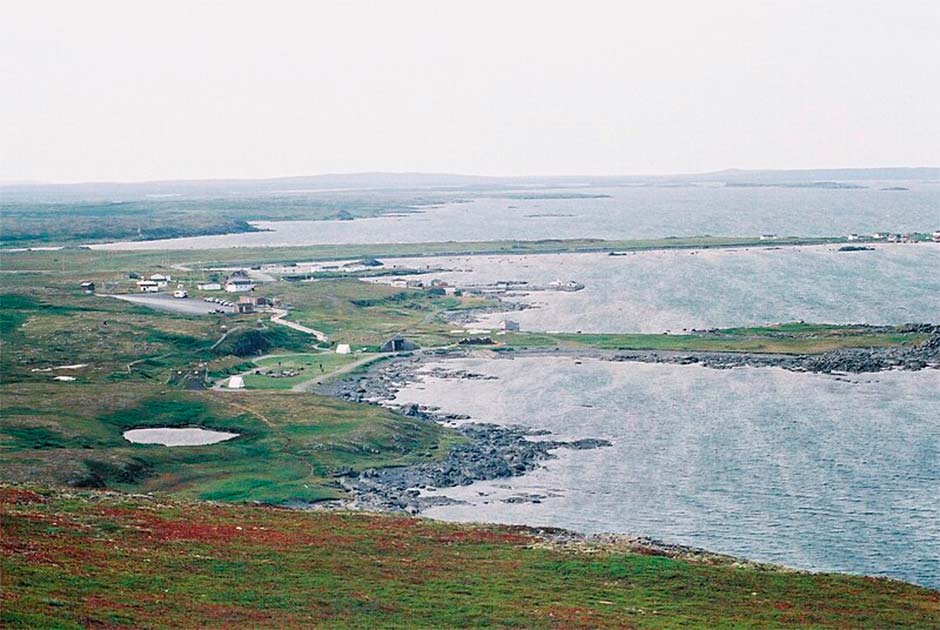For years many of us were taught that Christopher Columbus was the first European to find the Americas. Then more recently Leif Erikson the Viking has found fame as the first European to settle the Americas.
But someone came before them, Bjarni Herjólfsson, a Norse explorer whose inadvertent journey led to the first European sighting of North America. While his legacy remains less celebrated, the story of Bjarni Herjólfsson unveils a pivotal chapter in the early encounters between Europe and the New World.
How did he stumble across the Americas? What did he do with his discovery? And why do we not remember him as the first European to travel to the Americas today?
The First European to See the Americas?
Bjarni Herjólfsson was a legendary Norse-Icelandic explorer who some believe was the first European to lay eyes on the Americas. Most of what we know about him comes from The Saga of the Greenlanders, a 14th-century Icelandic narrative that covers the apparent Icelandic discovery of the Americas around 1000 AD.
Outside of his time as an explorer little was recorded about Bjarni Herjólfsson. According to the text he was born in the 10th century AD to Herjólfr Bárdarson and his wife, Thorgerdr.

The text describes him as “a very promising man” who had a passion for travel. This led him to become a merchant captain who was based in Norway but visited his father every summer in Iceland.
So how did a merchant captain discover a whole new continent? Well, he got lost.
It was the summer of 986 AD Bjarni Herjólfsson sailed home to Eyrarbakki, Iceland as he did every year to visit his father. Upon arriving, however, he discovered that his father was nowhere to be found. According to the locals, his father had joined Erik the Red (a legendary Norse explorer and the first man to settle a colony in Greenland) and sailed to Greenland.
Hearing that his father planned to move there permanently, Herjólfsson decided to follow his father. He emptied his ship’s cargo and informed his crew of his intentions of sailing to Greenland and spending the winter with his family. Having nothing better to do, his crew agreed to join him on his unexpected voyage.
Things quickly went off the rails. Herjólfsson carried neither a map nor compass and when a massive storm hit his ship, he was blown off course. When the storm clouds finally cleared, Herjólfsson spotted land, but it was nothing like what he was expecting.
The land he saw was covered in green trees and incredibly hilly. His crew begged him to stop and let them explore the strange land, but he refused. Instead, he carried on sailing to the north, spotting snow-capped mountains and seemingly endless forest to the west.
Again, his crew begged him to let them explore the seemingly hospitable land, but Herjólfsson knew better. No one on his ship had been to Greenland before but he could clearly see that this strange landmass didn’t fit any descriptions of Greenland. He changed course, and somehow, managed to regain his original route and find Greenland.
After landing in Greenland Herjólfsson decided to retire from life as a captain. He lived in Herjolfsnes, Greenland, until his father’s death. After inheriting his father’s lands, he returned to Norway to spread word of the lands he believed he had discovered.
Today, it’s widely accepted that Herjólfsson had spotted Newfoundland, Labrador, and Baffin Island while some believe he may even have gotten as far as Maine. As word of his discovery spread across the Nordic lands, he found both fame and criticism.
In particular, Erik Hakonsson, also known as Eric of Norway or Earl Eric, criticized him for not investigating the lands. His fellow Greenlanders on the other hand were quite excited. Greenland was in need of lumber and this new, forested land sounded just the ticket.
Leif Ericsson Settles America
Herjólfsson may have spotted the Americas, but he never actually set foot upon them. That honor goes to Leif Ericsson, son of Erik the Red. Around 15 years after Herjólfsson’s original misadventure Leif decided to go take a look for himself.
Leif bought Herjólfsson’s ship, hired a 35-strong crew, and set sail to retrace Herjólfsson’s journey. Upon arriving he named the land he found Helluland (Baffin Island today), Markland (Labrador), and Vinland. In Newfoundland (Vinland, that is) he’s believed to have set up his own Viking settlement, L’Anse aux Meadows, the first known attempt by Europeans to settle the Americas.

What ultimately happened to this settlement is a topic of much debate. After all, for centuries it was believed it was Columbus who discovered the Americas, much later than Leif. Factors such as conflicts with indigenous populations, resource limitations, and the harsh North American environment likely contributed to the settlement’s decline.
Archaeological excavations at L’Anse aux Meadows in Newfoundland have provided tangible evidence of the Norse presence in North America. Discoveries of artifacts and structures, such as dwellings and workshops, offer glimpses into the daily lives of the Norse settlers. These findings validate the sagas and oral traditions that hinted at Norse exploration in the region.
The artifacts include Norse-style tools, implements, and remnants of iron smelting, providing concrete proof of the Europeans’ sojourn in Vinland. The archaeological evidence, combined with the sagas recounting Leif Erikson’s exploits, paints a nuanced picture of the challenges faced by the Norse settlers and their attempts to forge a life in an unfamiliar and demanding landscape.
But Bjarni Herjólfsson’s discovery of the Americas must be one of history’s greatest accidents. Had he never gotten lost it’s likely Leif never would have sailed to Vinland. His chance sighting, while not resulting in a colony, paved the way for Norse exploration of the New World.
Sadly, Leif’s faced challenges, leading to its abandonment. Archaeological findings at L’Anse aux Meadows validate Norse presence, with artifacts and structures attesting to their sojourn. Bjarni’s accidental encounter, though overshadowed, played a pivotal role in the early exploration of North America, leaving an undeniable mark on history.
Top Image: Bjarni Herjólfsson sighted America while looking for Greenland, but decided it wasn’t worth the bother. Source: Christian Krohg / Public Domain.